

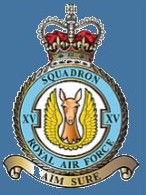
On February 8, 1945, the 15th Bomber Squadron of the Royal Air Force hired about 15 of its planes for a mission aimed at the important railway complex of Hohenbudberg in the Ruhr in Germany. If Belgium has been liberated for six months, Germany is still under the domination of the Nazi regime. Bomber Command (High Bomber Command) programmed this mission for which other squadrons are involved. 151 Lancaster were engaged in the mission.
The target is 350 km away from the 15 Squadron base in England at Mildenhall, Suffolk. The planes take off at 03:00 in the morning and reach the drop zone without incident. Since the Allies landed on the continent, the means of Nazi Germany have diminished considerably. The advance of the liberating troops has since June 1944 driven the occupier out of France, Belgium and Holland and entered the territory of the Third Reich. Although the von Rundstedt offensive in the Ardennes during the winter of '44 delayed the invasion of Germany somewhat, the progress is now being made effectively despite the tenacity of the Wehrmacht and what remains of the Luftwaffe.
On the railway site to be bombed, Flak was positioned. If it is not very important, its shots are precise and effective. The weather is clear, although it is still dark and apart from a few clouds, the target is clearly visible by the «bombers», the airmen responsible for triggering the bombs. They reach the ground, cause damage to the facilities and at least seven major fires.
After having dropped their bombs, the planes regain altitude and head west to return to their base of departure. For some time now, the airmen no longer have to fear the attacks of the German fighters, the enemy aviation having lost almost all of its aircraft and its pilots. But when flying over Holland’s border, the Lancaster HK620-LS-W of the 15 Sqd is hit by a shot from the Flak.
We don’t know much about what happens on board at that time. But it looks like the aircraft is turning south and heading for Namur and Nivelles. Witnesses living in Wauthier-Braine claim to have seen a large aircraft on fire in a slow descent heading towards the property of the Count d'Oultremont where he finished his race in a great crash.
The plane crashed in the «Bois du Haumont», actually owned by the Count. It can be assumed that when the aircraft was hit by Flak fire. The damage had likely reached flight controls that required the pilot to perform unusual maneuvers to keep the aircraft in flight while maintaining a heading. This probably explains the unusual route the aircraft took to reach the Belgian coast. Members of the crew may have been injured or even killed by Flak fire. If that is the case, there must have been a frenzy of panic on board.
The fact that the German fighter had not been operational for some time due to a lack of planes and pilots allowed the Lancaster to continue its flight in very difficult conditions. The pilot could surely have landed safely during his route. The airmen could jump with parachute when possible. Perhaps he thought he could lead his aircraft to England? All these questions will remain forever unanswered.
The Lancaster is running out of power, the controls are not responding. It plunges inexorably towards the ground. Before reaching it, the aircraft contacted the treetops of the Haumont wood, tearing off the branches as it passed. Stronger branches retain parts of the wings while the cabin breaks in two scattered over a wide perimeter of numerous debris. The heavier parts, such as the engines and the wheel sets, suddenly separate from what is left of the machine, plunge into the swampy ground there and sink deep into the ground. The rear part of the fuselage and the turret where the body of the gunner collapsed on his weapon suffered less.
The rescuers arrived quickly at the scene of the tragedy and rapidly realized that there were no survivors. British soldiers also joined the place to proceed directly to the findings and the identification of the victims. With the registration of the aircraft, they access the composition of the crew. It is made up of eight men on board, but they do not find one of the Airmen. It is Sergeant Alan Dodson, the wireless operator. After the bodies and effects of the victims have been collected, they are taken directly to Evere, where is the cemetery in which the British soldiers are buried. They are buried next to each other.
From this moment a controversy arises. Another name is added to the list of the remains of the crew received that day by the funeral attendants. This is Flight Lieutenant Alastair McQueen.
This means that there were 9 crew members on board the Lancaster HK620-LS-W fallen at Wauthier-Braine, which is not obvious because the maximum number of people a Lancaster could carry was maximum 8. For years, it was believed that a second Pilot was added to the crew, but the information was not confirmed by any official document. What the hell happened?
It is safe to suppose that there was perhaps a certain excitement at the Evere cemetery when the 7 bodies were brought from Wauthier-Braine. It is likely that Lieutenant McQueen’s arrived at the same time and that the person responsible for establishing the burial sites joined him unconsciously with the other seven. They are buried in the same row of graves, No. 28.
In fact, Alastair McQueen is the pilot of an Auser reconnaissance plane based in Eindhoven, Holland, and part of 2 Squadron. He went on a combat mission on 9 February 1945 with a Krefeld objective in Germany, and his plane crashed in Beuningen, not far from Nijmegen, for a reason that was not clearly explained. The airman was killed in the accident and his body was transported directly to the Evere cemetery where he was probably joined with those of the Lancaster fallen at Wauthier-Braine.
On that day, only 9 bodies were brought to the cemetery of Brussels/Evere: the 7 from the Lancaster HK620 fallen at Wauthier-Braine, that of the F/L McQueen, crashed at Beuningen (NL) aboard his Auser and that of Sergeant Adolf Lucian Leandre Van Melckenbeke killed during the takeoff of his Mosquito MT489-Z-KX at Bendish Hall, Essex UK, who is buried into the Belgian Airmen’s Field of honour.
It is therefore easier to understand how confusion may have existed.
In 1980, a part of wing and another of the fuselage are still visible, perched in the barrel, about thirty meters high. But one of the trees must be cut down and to this day, only the part of the cabin is still hanging in its tree.
On Sunday, 28 October 2000, 55 years after the aircraft’s crash, 30 members of B.A.H.S. (Belgian Aviation History Association), equipped with metal detectors, undertook searches and recovered one landing gear strut, aluminum foil for radar jamming and .50 bullets for gun machines.
The inhabitants carry of as “souvenirs” small debris while Mr. Minne living of Wauthier-Braine takes a large portion of the wing marked with the cockade of the RAF which will serve him for years as a part of a garden’s wall. It is now at the «Museum of Freedom» in Knokke/Ramskapelle.
Thanks to Marcel Detournay of Waterloo, we could get the pictures shown here below. They were not yet published. Mr Detournay toke himself in 1980 the pictures showing the parts of wreckage hanging in the tree.
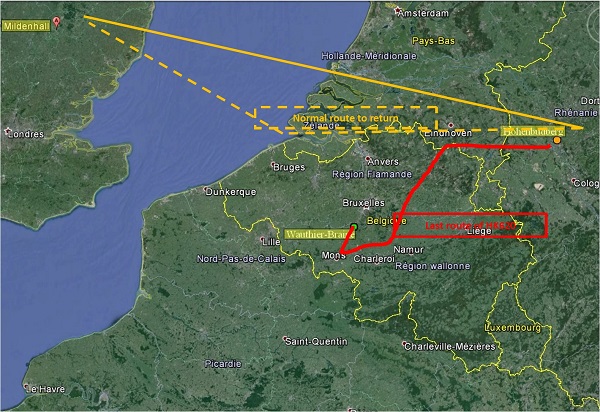
A vue of the "Bois du Haumont"
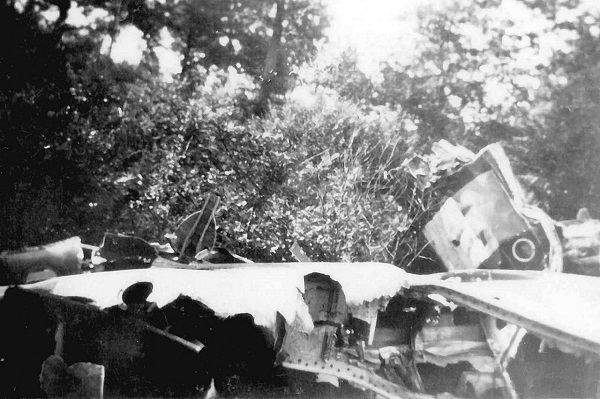
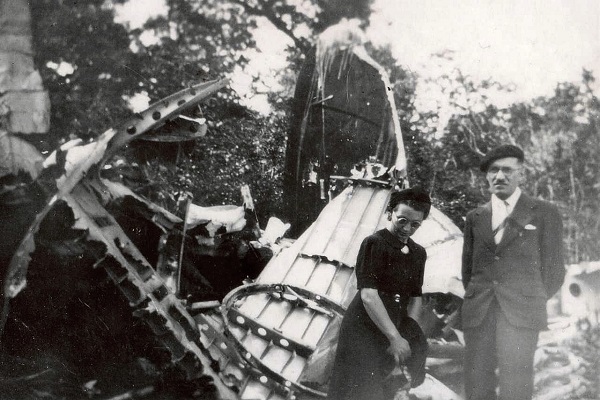
Whitnesses on the spot of the crash, in 1945
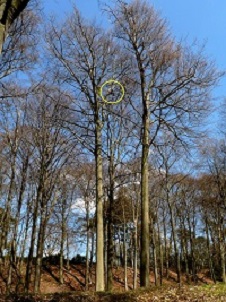
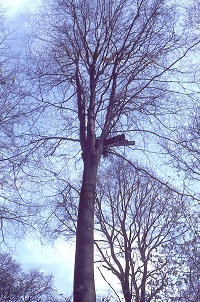
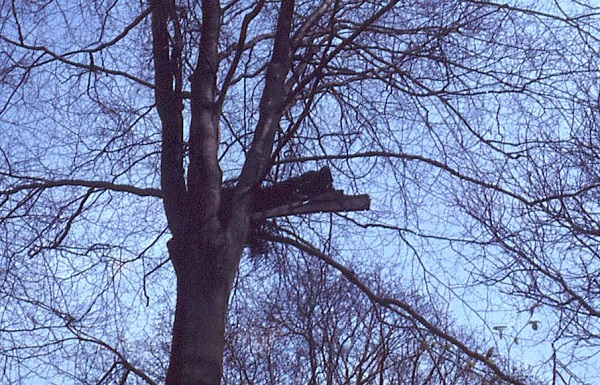
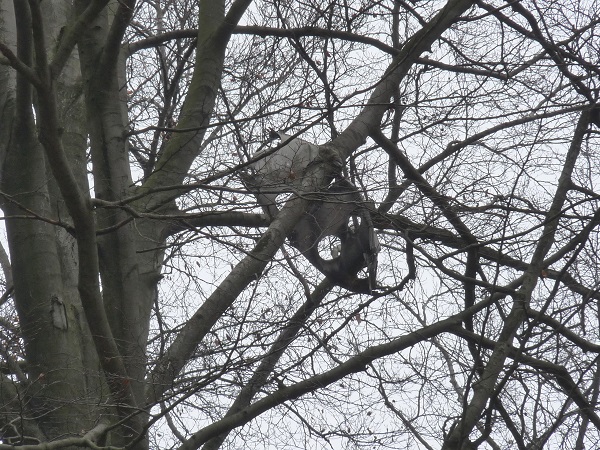
The part of the fuselage hanging in the tree, in 1980
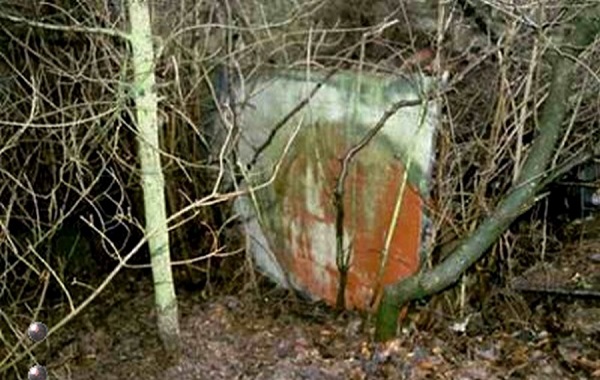
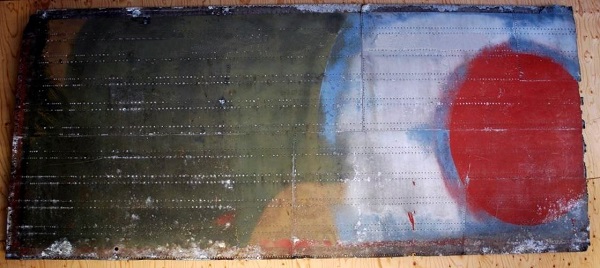
The part of wing which remains to the museum of Ramskapelle
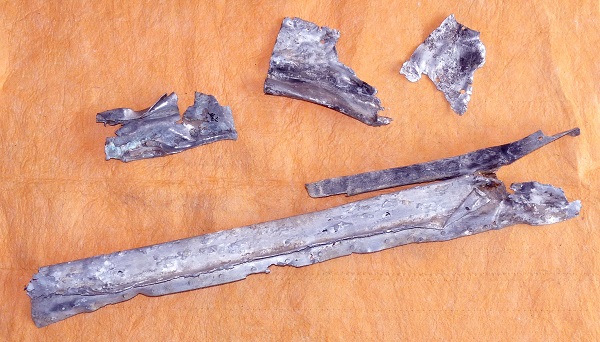
Few pieces of the wreckage taken by people


